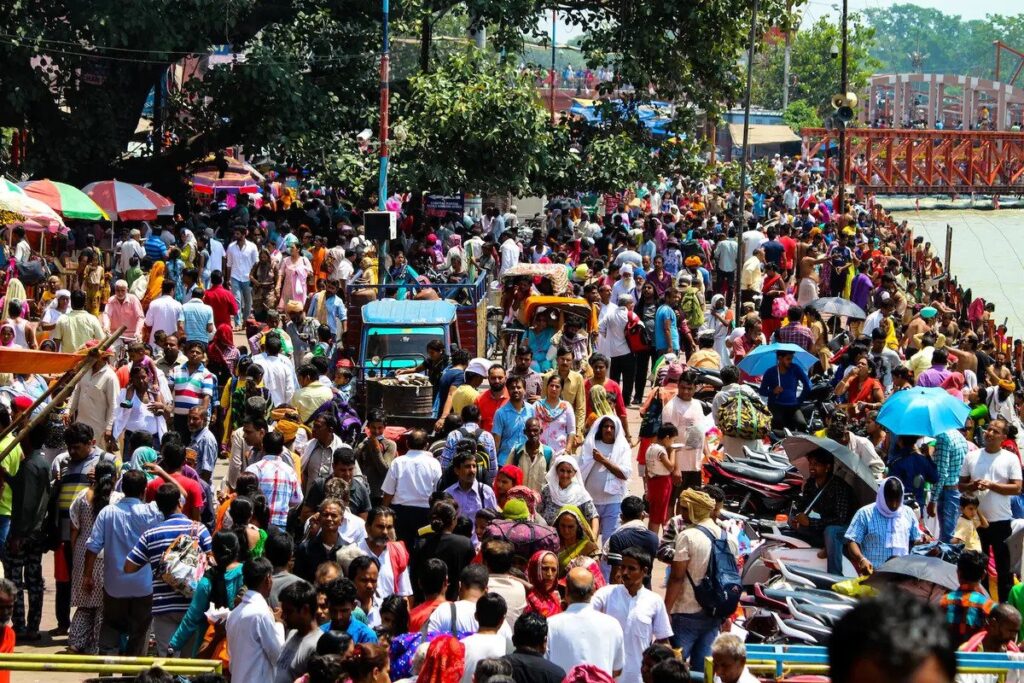For the first time in human history, the world population has surpassed eight billion. On Nov 15, 2022, the UN released a report detailing the demographic changes that will occur as a result of this. In it, it predicts that India will surpass China as the most populated country in the world this year. These new demographics highlight the changing structure of global power and economics in a fast growing world.
China has been the most populated country for over 70 years and was the first country to reach over a billion in population by 1980. With this large population comes the support for a strong economic system.
China has seen intense economic growth and now has the second-largest GDP in the world while also having the largest banking assets and leading in digital innovation and technology. Economic growth has also helped reduce the country’s poverty rate to under 0.3%.
Chinese president Xi Jinping has been focusing on increasing China’s soft power to increase likability and push the country’s political power in south Asia. President Xi has done this through social and political means, including the poverty reduction initiative and the “Belt and Road” initiative. The latter is a plan to build infrastructure that can link Asia and Europe, much like a modern Silk Road. These initiatives are intended to enhance regional connectivity, especially within rural areas.
Xi is clearly using China’s focus on development to create a cohesive international image, a “Chinese Dream” model, in opposition to the West’s portrayal of a threatening Communist superpower. The “Belt and Road” initiative is aimed at developing both Chinese communities but also international circles by creating a transnational economic integration across the Eastern hemisphere.
China is still influential in Asia but has seen a recent decline in its comprehensive power since 2020. Their diplomatic influence, cultural influence and even economic power have dropped seemingly as a result of the pandemic.
China’s economy is already facing recession with its “zero-covid” policy where millions of workers were confined to their homes during the multiple lockdowns the country has experienced. The global energy crisis has also increased power outages within the country, propagating further economic downturns.
Meanwhile, this comes at a time of impressive economic growth in India as their population surpasses China’s in 2023. India has the fastest-growing economy, overtaking the United Kingdom, and is on track to becoming the world’s third-largest economy by 2027.
India’s demographics continue to pull power and economy away from China. Their massive younger population allows for a stronger workforce, while China’s population is continuing to age out of prime working age due to a dropping birth rate.
India’s economic growth is projected to continue by 7 percent as the working force grows in the post-COVID era. The pandemic paved the way for a hybrid working environment, allowing many Indians to claim outsourced international jobs. The number of Indians employed in remote positions outside India is expected to increase to 11 million.
India’s rapid economic growth, tax cuts and infrastructure investments have shifted global production; India is expected to pull supply chains away from China and become the “factory of the world.” The economic growth from the changing supply chains has increased many Indians’ disposable incomes and consumer demands. India’s consumer demands account for over 50 percent of their economy, while China’s is less than 40 percent.
India’s economy has helped increase its power, especially in Southeast Asia – their rapidly growing economy has allowed the government to increase infrastructure, development, education and military spending. Their military is now the third largest behind the United States and China, although it isn’t seen as a threat to the West in the way China is.
The trend of immense economic growth has helped India’s poverty level fall from 55 percent to 16 percent. While the country still has the world’s largest impoverished population, their economic growth and booming workforce could contribute to a significant reduction in poverty, similar to what was observed in China.
However, India’s caste system still reverberates throughout the country, impacting demographic and socioeconomic trends. The caste system breaks up different social classes and distinguishes the duties of each caste with the “untouchables” at the bottom. The system is static, meaning that it is impossible to change a caste in one’s lifetime. Although the caste system has been outlawed since 2016, it is still rife throughout the culture and has kept millions of people in poverty.
India has tried to relieve the poverty that comes with the caste system by creating an “affirmative action” plan and a reservation policy to ensure that the lowest caste, Dalits, have access to jobs and public education. However, the Indian Supreme Court ruled that no more than 50 percent of jobs can be reserved; other castes are lobbying to also be considered for this reservation.
The booming economic growth has helped add jobs, thus increasing the number of Dalits that have allocated access to jobs, but urban employment opportunities for young adults are still limited. Some Indian activists believe that the reservation policy is just perpetuating poverty amongst so-called “low-caste” citizens and believe that “comprehensive social programs” are more optimal in alleviating the issue.
Moreover, India’s growth might be hindered by some human rights violations, which many Western countries take account of in their trade agreements. India has a history of abusing “freedom of expression,” especially against minorities and those of lower castes protesting against farming laws. Many journalists, students and lawyers have been faced with threats and harassment and access to private internet is not readily available due to the government’s constant shutdowns over “national security and public order.”
The United States is monitoring India’s human rights abuses and has engaged in multiple conversations with Indian defense minister, Rajnath Singh, and external affairs minister, Subrahmanyam Jaishankar, about their commitment to “democratic values.” Thus far, the United States is continuing to strengthen trade agreements and it is projected that $2 trillion in exported goods and services by 2030 will come from India. This will continue to build India’s economy and power throughout Southeast Asia.
Going forward, the upcoming global recession will impact all economic growth but it is unclear how badly it will affect global supply chains. India is expected to be the second-fastest growing economy in the 2022-23 fiscal year; however, the impending global recession might slow GDP growth to alleviate inflationary pressures and spending.
India’s growth in power is incredible. The world is anxiously awaiting to see what happens next and how India will fare with their newfound power.







